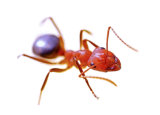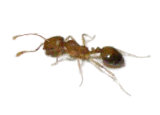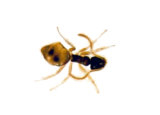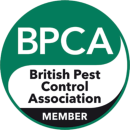
Ant Control Services
The most common ant found in the UK is the Black Ant or Garden Ant. It is found in a wide range of habitats and is common in urban and suburban locations. A heady cocktail of managed grass, flower beds and sun-warmed paving is especially attractive to this ant. They feed on a wide range of foods and ants living close to buildings readily come indoors to feed on food debris.
Ants live in nests which are typically located in the soil, often under paving slabs, in building foundations and occasionally in the cavity walls of buildings. Each nest comprises a queen ant, thousands of workers (which are 2mm to 5mm in length and are the most commonly seen), some males and some juveniles. There can be many thousands of ants in one nest and a nest can persist for several years. This species of ant produces the flying ant on humid days in summer, behaviour associated with mating.
Ant Control
Ants can be controlled with a combination of insecticides and gel baits which can only be used by qualified pest controllers. Experience in gaining control over ant colonies is vital to gain the best results and is something we specialise in. Call now for a free consultation.
Other ant species
Red Ants

Not so common is the biting ant, known as the red ant, which can often be found under debris or stones in the garden. More common in countryside than urban environments. Can cause a real problem when the foraging workers come indoors searching out sugary food sources. Swarms when mating, often in August. Stings readily, producing a reaction similar to stinging nettles. Workers about 3.5mm to 5mm in length. Protein eaters which are quite difficult to deal with.
Pharoah’s Ants

The Pharoah’s ant is tropical ant species but one that survives in the UK close to heated locations. Nests are often deep-seated. Workers are light yellowish in colour with a darkish abdomen and a characteristic ‘double waist’. Each nest has many queens. Feeds on human foods like meat, jam, sugar etc. and can be a real nuisance around food preparation areas. Can swarm at any time of year. Muliple treatments usually required as as soon as you start killing them you get colony splitting with queens leaving the endangered nest to set up new colonies, so patience is needed.
Ghost Ants

A small ant usually under 2mm in length which can be identified from its pale / translucent legs and abdomen. Nests indoors in small spaces such as wall cavities. Likes moist areas and often found under flowerpots in gardens. Feeds on sweet substances. Colonies can have several nesting sites. Again patience is needed when dealing with this ant with multiple treatments usually required.





































